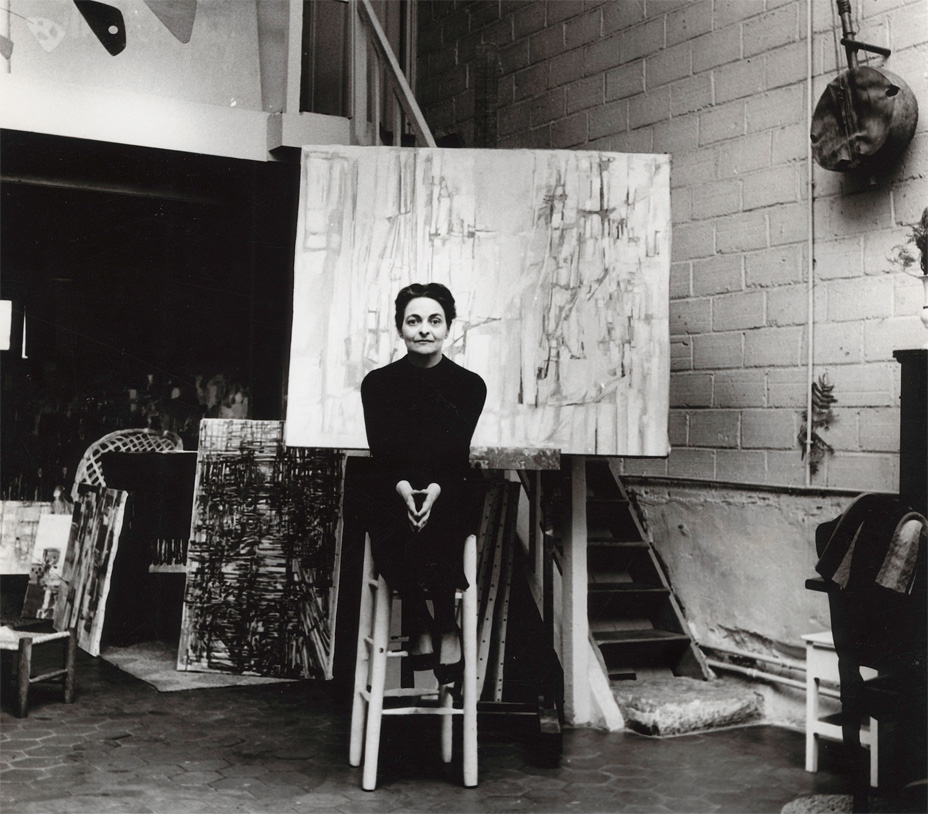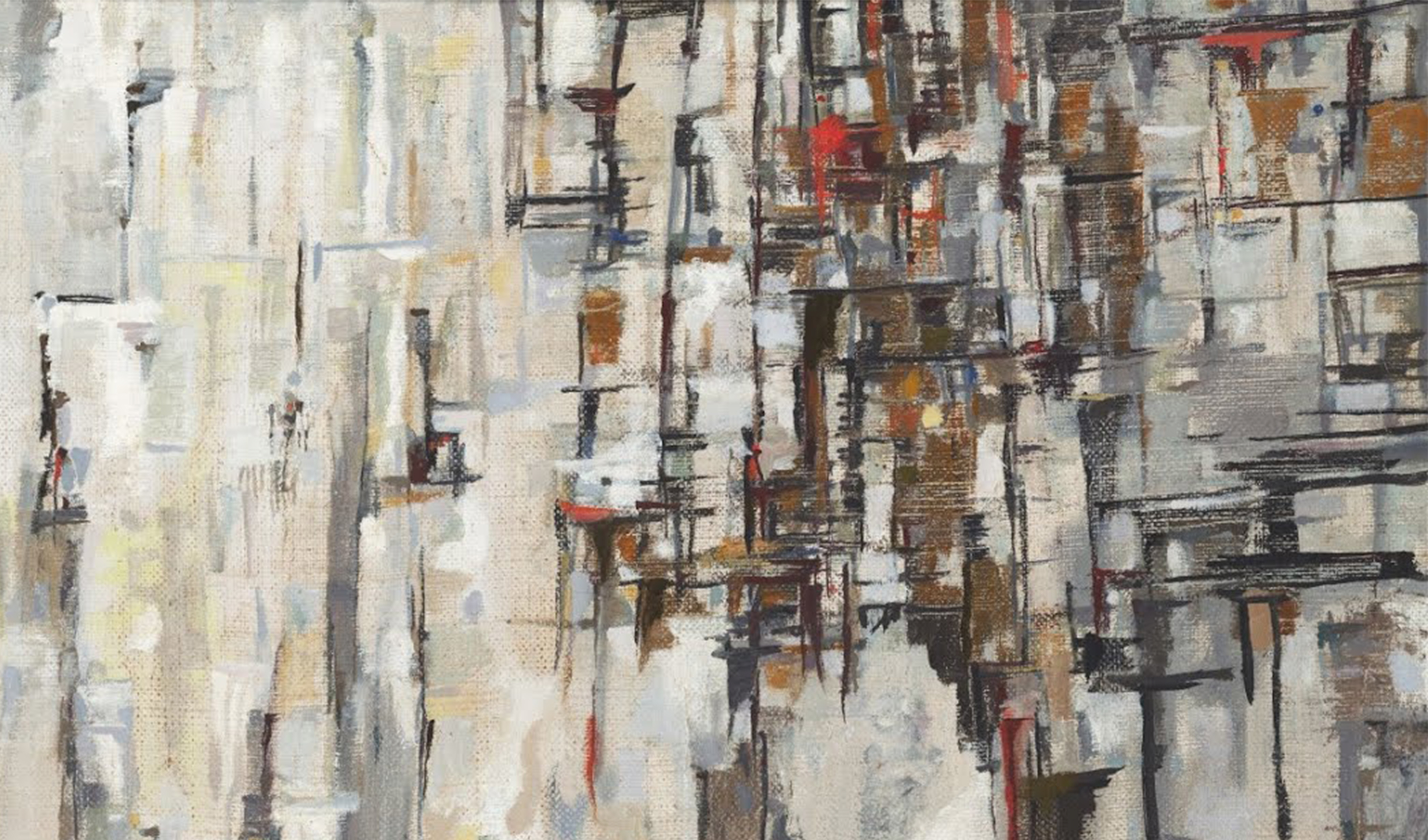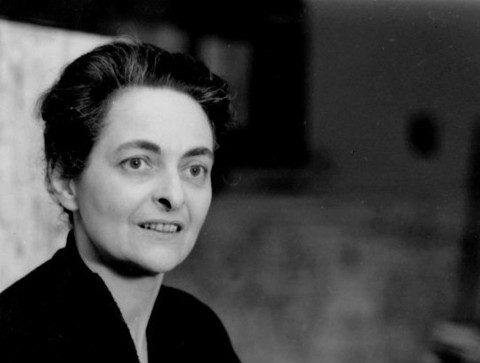Maria Helena Vieira DA SILVA (1908 -1992)
Sans titre, 1955
Oil on burlap
100,5 x 50,5 cm

Sans titre, 1955
Oil on burlap
100,5 x 50,5 cm
Vieira Da Silva’s 1950s period is marked by a meticulous exploration of space and perspective. In her paintings of interiors and urban landscapes, her works deftly interweave geometric motifs, refined color harmonies and appealing brushstrokes, creating mesmerizing labyrinths of line and form.
Vieira Da Silva captures the essence of different spaces, transformed into abstract compositions of architectural elements. Her paintings often represent libraries, theaters and skyscrapers where the rows of shelves, columns and windows become the elements that will constitute a true and personal visual symphony.

Maria Helena Vieira Da Silva in her studio, 34 rue de l'Abbe-Carton, Paris 1960. © Wölbing-Van Dyck, Bielefeld and Ida Kar
Maria Helena Vieira Da Silva
The evolution of a horizontal composition towards the verticality of a series of paintings of cities in the 1950s coincide with Vieira Da Silva’s first travels to New York. In 1946, her first solo show at Jeanne Bucher is followed by the exhibition “The New Decade: 22 European Painters” at MoMA in 1955 where the painting The City, 1950-51 was presented.
The city that inspired some of the greatest masters of abstraction, like Piet Mondrian, has surely marked Vieira Da Silva’s spirit. Cosmopolitan city where the unmeasurable buildings are organized in a grid, Manhattan’s checkerboard fits perfectly in the artist’s visual lexicon, to which she adds her lyricism.
Sans titre, 1955 reflects the pulsating and dynamic energy of urban life. Through a fervent and structured abstraction, Vieira Da Silva manages to perfectly capture the sounds, the movements and the rythmes of the city that never sleeps: the famous yellow cabs that scour down the avenues, the traffic lights, the billboards and the swarming of inhabitants spilling out onto the sidewalks, are translated by the artist’s lively brushstrokes.
It is this human experience, the one of inhabiting and navigating through the complex systems of a big city, that Vieira Da Silva succeeds in evoking in the viewer, who can’t help but imagine this incredible spectacle. The strategic use of bright, fiery primary colors in the lower register of the canvas contrasts with the silent, majestic power of the skyscrapers dominating the rest of the composition.

La ville en ruines, détail | 1955 | Oil on canvas | ©Museu do Caramulo, Portugal | Donation by Alberto Pires Ribeiro
Vieira Da Silva offers us a glimpse of that intangible, vivid feeling of being completely engulfed by towering skyscrapers. These metal structures soar skywards and beyond the frame, conveying a sense of verticality and unattainable height. The artist’s signature network of subtly aligned lines and shapes, creates the vanishing point that centers the canvas and guides the viewer’s eye.
Vieira Da Silva’s abstract landscapes are not simply decorative or picturesque depictions of environments and interiors. Her works are profound meditations and true symphonies that provoke our imagination and awaken all our senses.
Maria Helena Vieira Da Silva
Born in Lisbon, the painter Maria Helena Vieira da Silva (1908-1992) moved to Paris in 1928 to become one of the major figures of post-war art, one of the few female artists to gain international fame in the 1950s. In her painting, described as “abstract landscape art,” Vieira focused her attention and her practice on the question of perspective. Her central subject was the city.
